Beyond Amazon and Etsy: Ecommerce Product Photography That Builds Your Brand
Ecommerce product photography is an essential part of any online business that sells goods, yet there’s much more to it than just taking product photos and slapping them online—especially if you’re selling from your own ecommerce website. Most ecommerce product photography tutorials, however, talk mainly about the nuts and bolts of setting up your product photo shoot and/or taking product photos that work primarily for Amazon, eBay or Etsy. You know the kind: simple white background, no distractions, no shadows… Yet for most business owners, that’s only one part of what’s needed to grow their business.
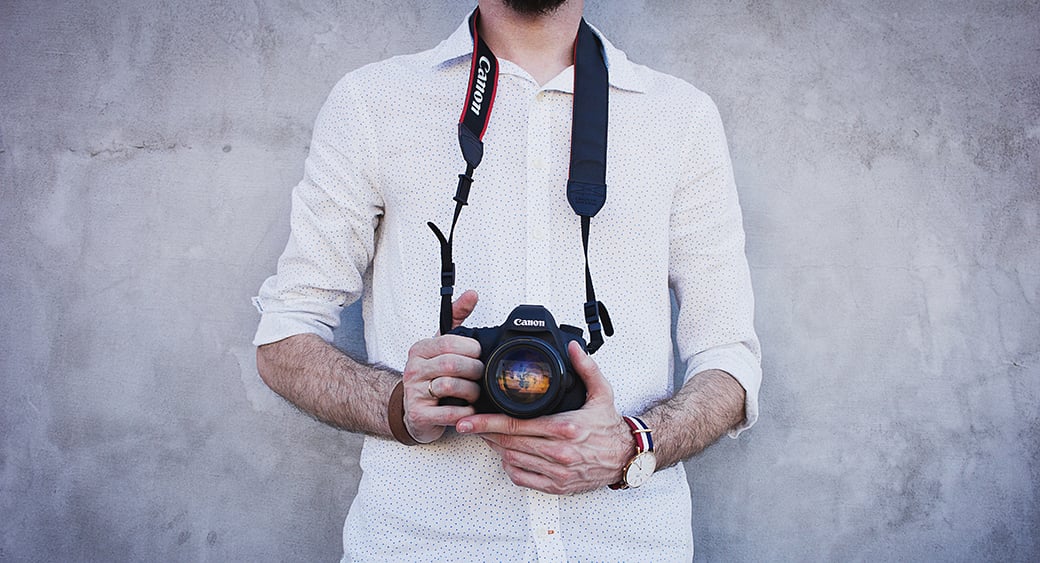
How you present your brand, which photos you choose for the different platforms (ecommerce website, Instagram, Facebook, etc.), and learning to offer compelling product photo imagery will all be very crucial elements to your overall business success. In fact, to be successful in this day and age it’s important to learn all you can about marketing and how your ecommerce product photography will best fit into your overall marketing strategy. In addition to the previous posts related to ecommerce checklist, bestselling ecommerce templates, and ecommerce website optimization, this article will give you insights related to professional photography. The product photography ideas in this post are geared towards that—thinking in terms of the bigger picture. We hope you find them helpful.
Product-Only or Lifestyle Images—Which to Choose?
The simple answer is: both!
If you’re buying selling products online, you’re probably well acquainted with product-only images. These are photos, usually taken on a white background, that cleanly showcase an item from different angles. It’s what we’ve all seen on Amazon, eBay, and many other sites. They’re the ideal photo when a shopper is looking to buy and just needs to examine the product as thoroughly as they can (given that it’s an online store and they can’t actually touch it).
Take this page from Gregory Packs. It’s simple, sleek, and provides a number of different photos from different angles. If you were shopping for a backpacking pack, you’d be able to access much of the information you’d need to make a purchase. Therefore, they show you the product from al possible angles and reduce the shopping cart abandonment rate at the same time.

Chances are, if you’ve already got an ecommerce site up, these are the types of photos you have. They’re relatively easy to create (though harder than most ecommerce product photography tutorials give credit for), and if your products are small, you can easily make do with a DIY light tent, some fairly inexpensive lighting and photo editing program like Photoshop or Luminar. If your products are larger, however, the lighting can become a bit trickier. If you’re struggling with getting the photos the way you want them on your own and your inventory doesn’t change very often, it could be worthwhile to have them professionally done. Either way, product-only photography is an absolute must for your products pages, and when well-done will be one of the biggest factors in successfully driving conversions.
Still, product-only photos don’t generally serve to create an overall brand feel. They don’t draw your viewers in, or create a mood or feeling that can help a potential customer feel like your brand has what they need. That’s where lifestyle photos come in.
Lifestyle photos
show a product in the context in which they’re supposed to be used or alongside other complementing products. For example, if you’re selling a photography bag, like Langly’s Camera Bags below, showing it being worn—especially in an appealing environment—will not only showcase the product but also give a feeling as to why one would want one:

Another technique is to show it alongside the elements you might pack inside:

While quite adept at creating conversions, these types of shots are not just meant to land a sale. They’re meant to create a vibe, a gut reaction that inspires the viewer to say, “Yes! I want this in my life! This is the lifestyle I want to have.” If you can inspire a viewer to consider your brand as part of their overall lifestyle, you’ll have them for life.
Unfortunately, investing in this type of commercial photography isn’t cheap. A product photoshoot of this nature takes a fair amount of knowledge, time, and gear to successfully pull off. If you already have a love of photography, you can try to get these types of photos on your own. But if you’re short on time and/or photography is not your thing, this is another situation where you might want to call in a professional.
Lifestyle Product Photography Ideas
One of the downsides to shopping online is that a customer can’t fully experience the product. Sure, they can see it (providing you’ve taken decent product-only photos), but they can’t hold it in their hands, try it on, smell, or taste it. All they’ve got is the photos (and to a lesser extent, their descriptions). The most successful ecommerce product photography does everything it can to capture a product visually and make it easy for the viewer to imagine the other senses. This can be done to some extent with product-only photos, but to really nail the feel of things, you’ll have to broaden out the context of your shots. And since investing in lifestyle shots is almost always pricey, you’ll want to give some consideration to what types you’ll want. Here are a few ideas.
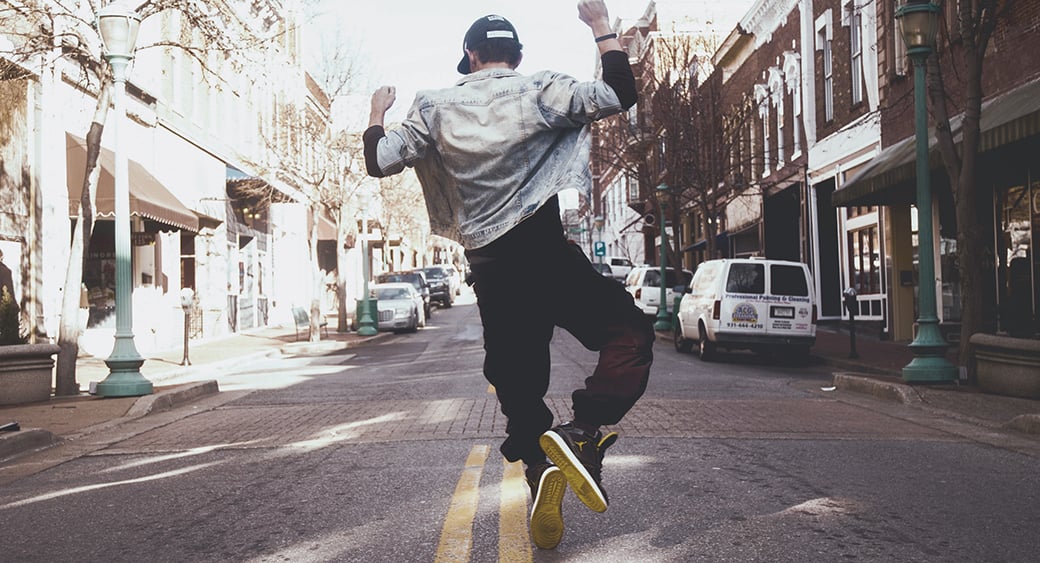
Show the Product in Use
Take a look at the Helm Boots photo above. The photo is really pretty simple—just a man adjusting his pant cuff—but something in it evokes a sense of how the leather really feels. Somehow we can sense how his feet are fitting into the leather, perhaps even imagine how our feet would feel in those shoes. That’s the magic you’re looking for. The subject matter of the product photoshoot doesn’t have to be complicated (this one is simply a man in jeans and boots against a brick background). It just needs to be evocative. This type of shot is ideal both for your landing pages and for social media marketing.
Tell A Story
Effective brand marketing doesn’t just show a photo of a product and expect people to buy it. Rather, it uses the images to tell a story. What story? Well, any that support your brand’s “feel.” Take, for example, this shot from Sierra Designs. The product in the shot is almost secondary to the relationship between the two campers, the joy of being in the tent as it’s going up, and the feeling that comes with being in the woods. The intention behind the photo is to create a similar emotional response in the viewer, one that will ultimately inspire them to want to be more like the couple in the photo.
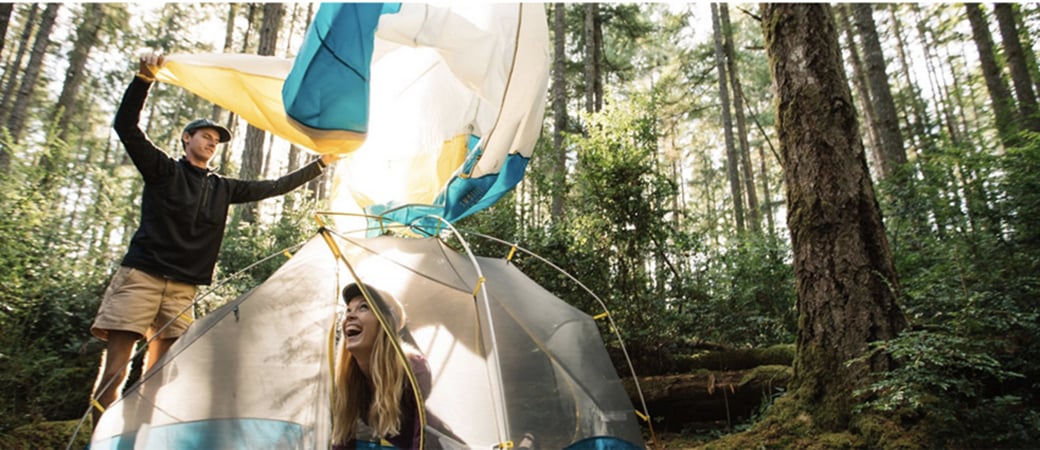
How-To’s
How-to photos can be just one photo or a set of them. They create a sense of understanding in the viewer as to what’s needed to use or install a product. For example, if someone had never installed laminate flooring before but was considering buying it, the above photo would catch their interest. Not only does it show what tools are needed, but it also gives a sense that installing it is “doable.” That’s something a would-be buyer needs in order to make the final decision. It also adds more context to the product, giving it more “life.”
Things That Go Together
One trend in ecommerce product photography that’s become very popular is the use of the flat lay technique. First popularized on Instagram and Pinterest, flat lay photography takes a bird’s-eye view of your products. For example, this photo from REI shows an entire outfit, not just the individual products. In the Langley camera bag photo above, all the contents of the camera bag are laid out on a deck. These types of photos not only generate interest in buying the additional items, they also can create curiosity. (I.e. just how much stuff can that camera bag hold? What items would a photographer choose to put in it?).

Flat lay photography can be used both for websites and for social media. The setup doesn’t have to be particularly complex, and you can showcase everything from the shades of lipstick you sell to children’s toys that are often bought together. As long as the content clearly fits together, you’re good to go.
Ecommerce Product Photography for Social Media
Unlike the photography for websites, the kind of images most useful in getting your users to engage in your social media accounts can be quite easy to take on your own. You can also really expand out your product photography ideas to include real-life moments, something that is quite easy to do with your phone. In fact, the current trends in marketing show that consumers are more and more suspicious of overly-showy imagery and are craving real, down-to-earth images that show things as they really are.
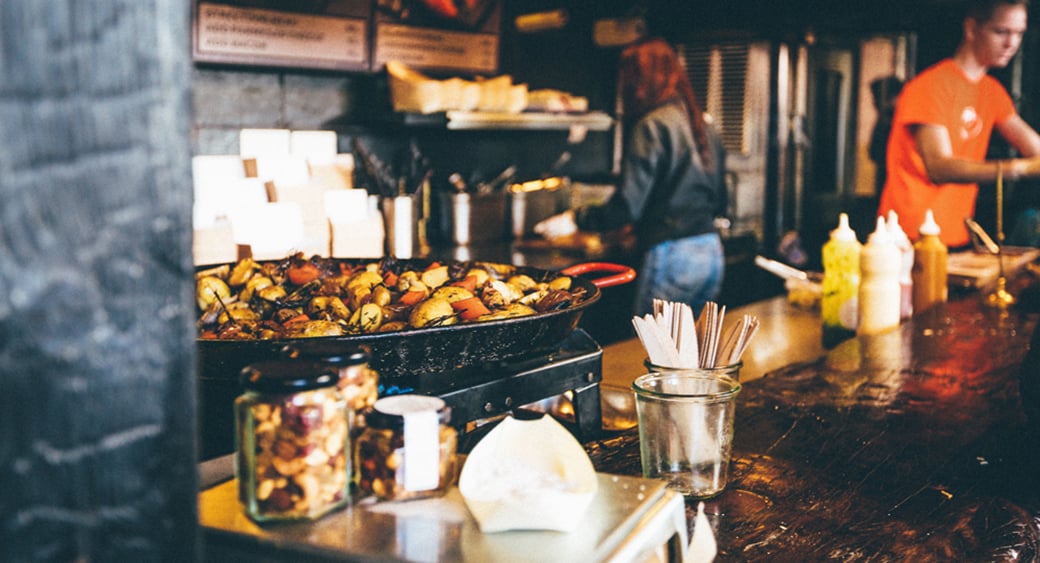
Dead Panning
The style of ecommerce product photography that’s easiest to use with social media is called “deadpanning.” Unlike standard product photos, in which a lot of care goes into the setup, a deadpan shot is one that is uploaded exactly as it was taken, with no obvious “polish” applied. It’s meant to be gritty and not quite perfect. The intention is to show off your brand in real life, without any possibility of misleading photo editing or staged setups. For example, the photo above was taken from the vantage of someone who was actually at the restaurant in real time. It smacks of reality. This wouldn’t be the greatest photo for your products page, but this “breath-of-fresh-air” honesty can land well in the social media realm.
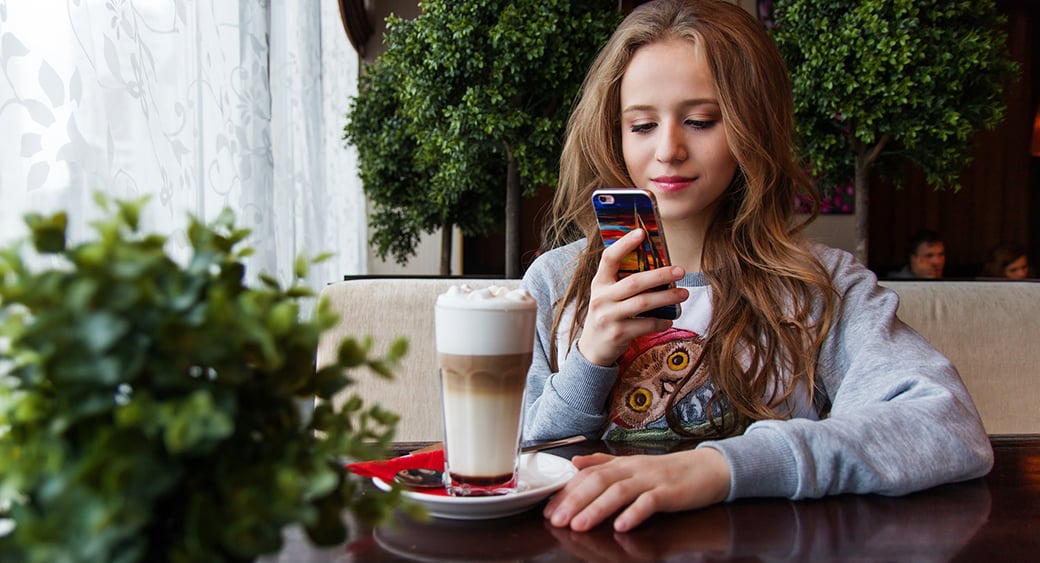
Also, a major bonus of deadpan photos is that they’re extremely easy to take and then share. The fact that editing is discouraged means that’s one less thing on your list of things to learn (or at least spend time doing). So while photography for websites needs to be much cleaner—deadpan photography might do wonders on your blog or Twitter account. In all reality, deadpan photos are probably the most accessible form of commercial photography: simply catch the right moment and watch your user engagement soar.
There are, of course, other types of photos that work well for social media, so don’t just stick to deadpanning. The key in all of them, though, is to make sure they smack of reality. Anything overly polished (unless your selling high-end fashion) is likely to be looked at with at least some level of distrust.
So there you have it. Ecommerce product photography is more than simply taking product photos on a white background. It encompasses just about all that commercial photography has to offer in terms of marketing, creating a sense and feel for your brand, and social media user engagement. And while it will definitely take some time, creativity, and most likely money to get the photos that best showcase your brand, it will be well worth the investment in the end.




Leave a Reply